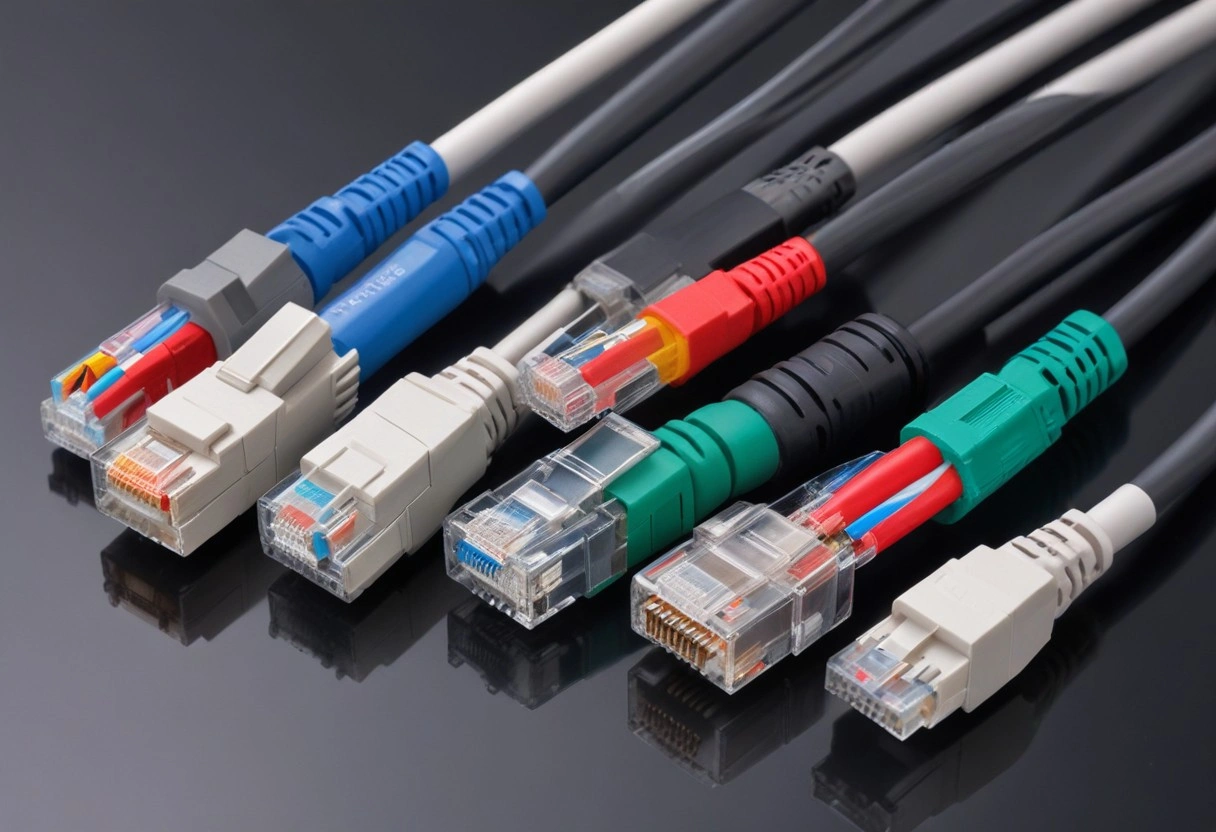Types of Internet Cable
In the digital age, the role of internet cables is pivotal in ensuring seamless connectivity.
Created by: Daniel Ogunsemowo /
Vetted by:
Otse Amorighoye

In the digital age, the role of internet cables is pivotal in ensuring seamless connectivity. Whether it's streaming high-definition videos, engaging in online gaming, or managing large-scale business operations, the backbone of such activities is a robust internet connection facilitated by appropriate cabling. This guide delves into the various types of internet cables, highlighting their functions, benefits, and limitations to help you make an informed decision based on your specific needs. Internet cables are the conduits through which data is transmitted between devices and across networks. They are fundamental to internet infrastructure, carrying the signals that enable communication and data transfer across the globe. For a deeper understanding of how structured cabling plays a role in this, check out Decoding What Is a Structured Cabling System: A Comprehensive Guide. This article explores three primary types of internet cables: Twisted Pair, Coaxial, and Fiber Optic. Each type serves distinct purposes and is engineered to meet specific performance criteria in different environments. To understand more about different network cables, see Types of internet Cables. Twisted Pair cables consist of pairs of copper wires twisted together, which helps to reduce electromagnetic interference. Commonly used in residential and business environments, these cables are versatile and cost-effective. Twisted Pair cables are classified into categories such as Cat 5, Cat 6, and beyond. Each category differs in terms of transmission speed and bandwidth, with higher categories offering improved performance. Pros: Cost-effective: One of the most economical options for network cabling. Flexibility: Easy to install and route through walls and other tight spaces. Upgradeable: Upgrading to a higher category is generally straightforward. Cons: Susceptibility to Interference: Prone to electromagnetic interference and crosstalk, especially in environments with numerous electrical devices. Distance Limitations: Effective only over relatively short distances before signal degradation occurs. For more on twisted pair cables, see Understanding the Different Types of Data Network Cables. Coaxial cables feature a central metal conductor surrounded by an insulator, a metallic shield, and a plastic covering. They are primarily used for broadband internet connections and cable television services. Common types include RG-6 and RG-59. RG-6 cables are favored for internet and satellite signals due to better shielding and lower attenuation. Pros: Durability: Robust construction that withstands physical and environmental challenges better than twisted pair cables. Less Interference: Superior shielding against electromagnetic interference. Cons: Rigidity: Less flexibility, making it harder to install in tight spaces. Cost: Generally more expensive than twisted pair cables for the same length. For installation tips, see Types of Internet Cables. Fiber Optic cables use optical fibers that transmit data as light, making them capable of supporting extremely high-speed internet connections over long distances without signal loss. For a deeper dive into the advantages, check out Advantages of Using Fiber Optic Cabling for a Network. There are two main types: Single-mode and Multi-mode. Single-mode fibers are used for long-distance communication, while Multi-mode fibers are suitable for shorter distances. Pros: High Speed and Bandwidth: Capable of supporting extremely high data transmission rates over long distances without signal loss. Immunity to Electromagnetic Interference: Not susceptible to interference, providing cleaner and more reliable connections. Cons: High Initial Cost: Installation and materials are more expensive than other types of cables. Specialized Installation: Requires skilled technicians for installation and maintenance. Choosing the Right Cable for Your Needs Selecting the right internet cable involves considering your bandwidth requirements, the distance the cables need to cover, environmental factors, and your budget. Twisted Pair cables are ideal for general home and office use, while Coaxial cables are better suited for high-quality video transmission. For ultra-high-speed requirements and long-distance applications, Fiber Optic cables are the best choice. Understanding the different types of internet cables and their specific applications helps in optimizing your internet setup. Whether you are setting up a home network or configuring a data center, the choice of cable can significantly impact performance. For tailored advice, always consider consulting with a telecommunications professional. Cat 6 or higher Twisted Pair cables are typically best for gaming due to their high-speed and low-latency capabilities. Common signs include frequent disconnections, slow speeds, and physical damage to the cable. Yes, coaxial cables are suitable for office internet setups, especially where high bandwidth and durability are required. For office cabling solutions, check out Office Data Cabling: The Ultimate Guide to Efficient and Reliable Network Infrastructure. Cat 7 cables provide higher bandwidth and faster transmission speeds than Cat 6, supporting up to 10 Gbps. For more on this, read Ethernet Cable Management Tips. For most home users, fiber optic may offer more bandwidth than needed, but it is a future-proof investment if you demand ultra-high-speed internet. For further insights, explore Advantages of using fiber optics. For more insights, explore:Understanding Internet Cables
Definition and Function
Types of Internet Cables
Twisted Pair Cable
Description and Use
Categories of Twisted Pair Cables
Pros and Cons
Coaxial Cable
Description and Use
Types of Coaxial Cables
Pros and Cons
Fiber Optic Cable
Description and Use
Types of Fiber Optic Cables
Pros and Cons
Factors to Consider
Comparison
Conclusion
FAQ Section
What is the best internet cable for gaming?
How do I know if my internet cable needs replacement?
Can I use coaxial cable for my office internet?
What's the difference in speed between Cat 6 and Cat 7 cables?
Is fiber optic worth the investment for home use?